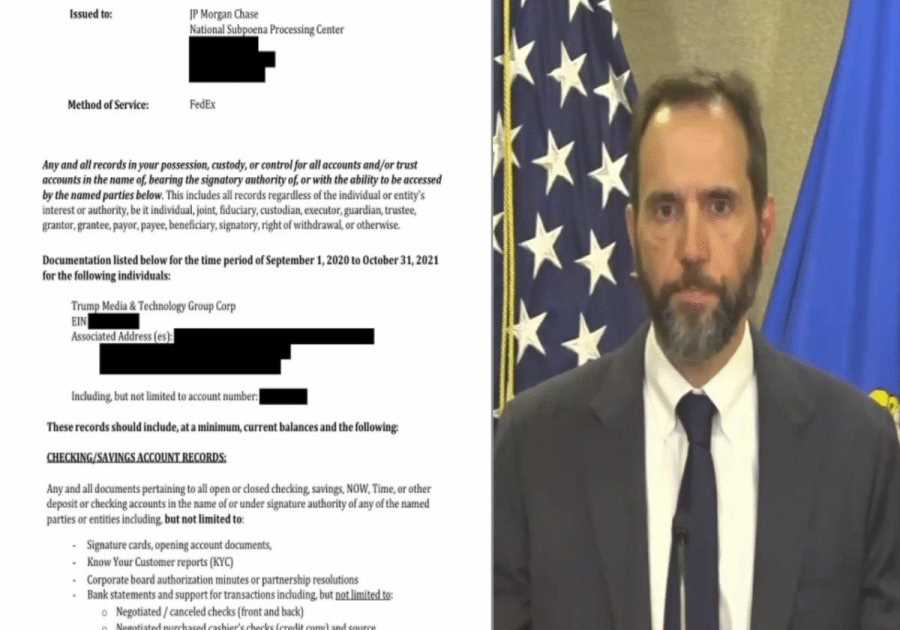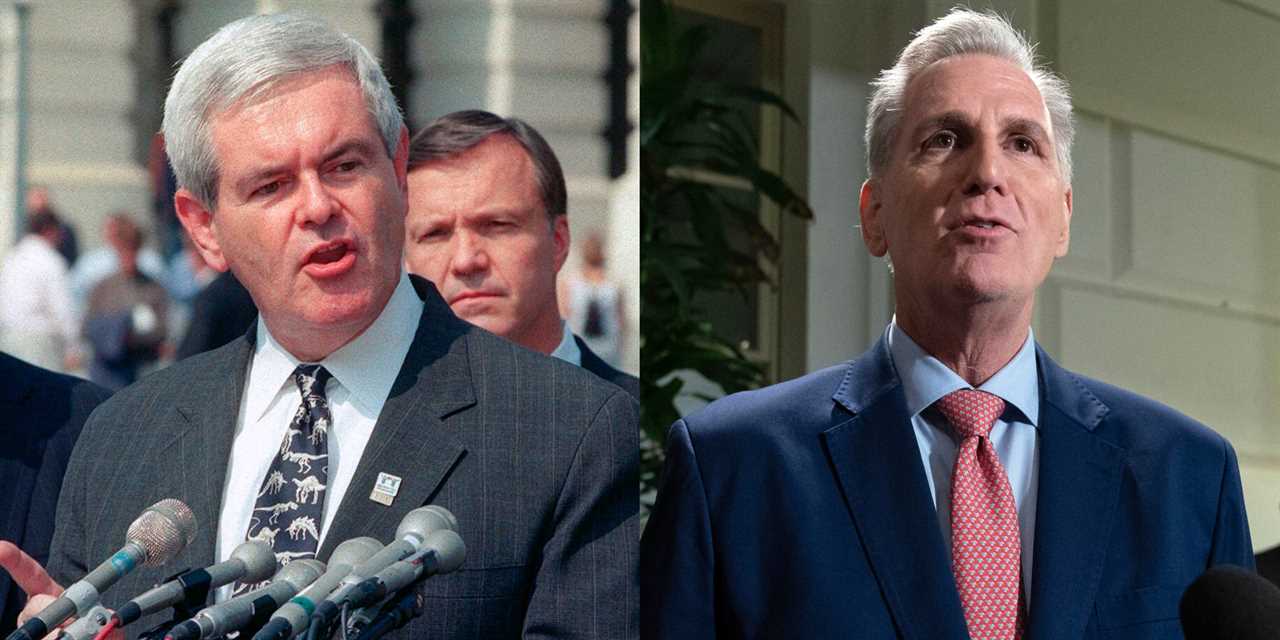
AP Photo/Leslie Kossoff, File; AP Photo/Jose Luis Magana
- Ideological battles among House Republicans are not a new phenomenon on Capitol Hill.
- In the 1990s, Newt Gingrich's performance as speaker led to a rebellion among many conservatives.
- But in recent years, conservative frustrations have boiled over, leading to the actual ouster of a GOP speaker.
For nearly two weeks, the House Republican Conference has been in a holding pattern, as the ouster of Rep. Kevin McCarthy of California as speaker roiled its members and created an urgent leadership vacuum.
After McCarthy's exit, Rep. Steve Scalise of Louisiana was set to ascend to the speakership. But he was far short of the requisite 217 votes to secure the post on the House floor, and announced late last week that he would no longer be seeking the position.
Enter Rep. Jim Jordan of Ohio, who's amassed a national profile among conservatives for his aggressive oversight tactics. Jordan has the support of many hardline conservatives, but a bloc of members remain hesitant to support him.
Jordan may eventually win enough members over to claim the speaker's gavel, but deep divisions among House Republicans remain, a vestige of the hard-knuckle politics of the 1990s.
How do the GOP battles of the Bill Clinton era inform the current conservative squabbles that continue to divide the party?
Early stumbles
Ahead of the 1994 midterm elections, then-House Minority Whip Newt Gingrich of Georgia crafted the conservative "Contract with America," which promised wholesale reforms in the House if Republicans won control of the chamber that year.
GOP candidates across the country touted their push to pursue an audit of Congress, end proxy voting, and limit the terms of committee chairs, among other measures.
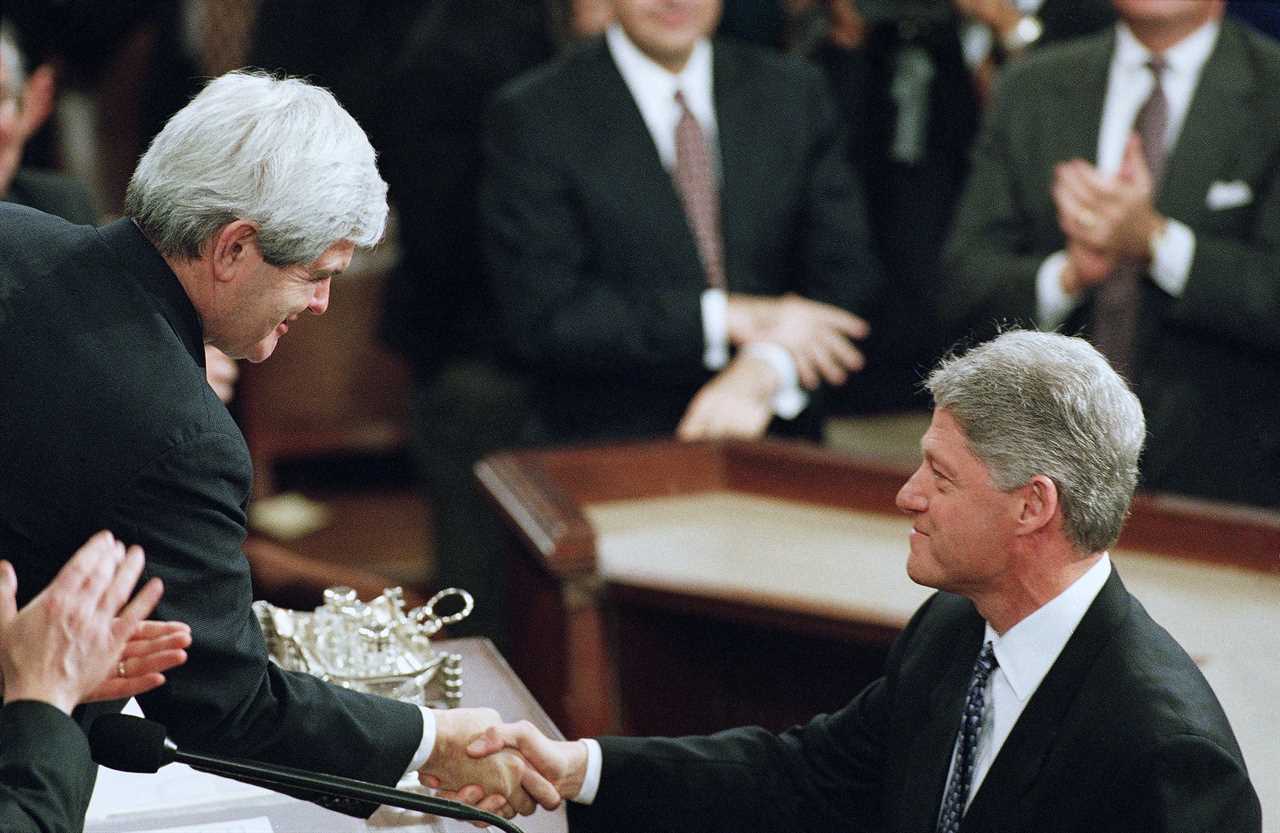
AP Photo/Doug Mills
After Republicans flipped the House that year, Gingrich became the speaker.
But Gingrich's response to the federal government shutdowns of 1995 and 1996, along with the GOP effort to impeach Clinton in the lead-up to the 1998 midterms, took a toll on the Georgian's popularity within the conference. (Clinton won a second term in the White House in 1996 and Democrats picked up five House seats in 1998.)
A conservative backlash against Gingrich swelled within the party ranks, prompting him to step down from the speakership ahead of the new Congress in 1999. But then-Rep. Bob Livingston of Louisiana, who was set to succeed Gingrich, stunned Republicans by withdrawing his candidacy after he admitted to having extramarital affairs.
Republicans then turned to then-Rep. Dennis Hastert of Illinois, a pick that at the time unified the conference, but the cracks within the party were beginning to show.
Fraying Republican unity
For part of the 2000s and much of the 2010s, House Republicans had manageable majorities, which were not overwhelming but gave the party enough of a cushion to mask the internal frustrations of its most conservative members.
During former President George W. Bush's tenure, the party enjoyed a rare post-9/11 stretch of unity, with House members lining up behind the Texan's legislative agenda of tax cuts and standards-based education reforms.
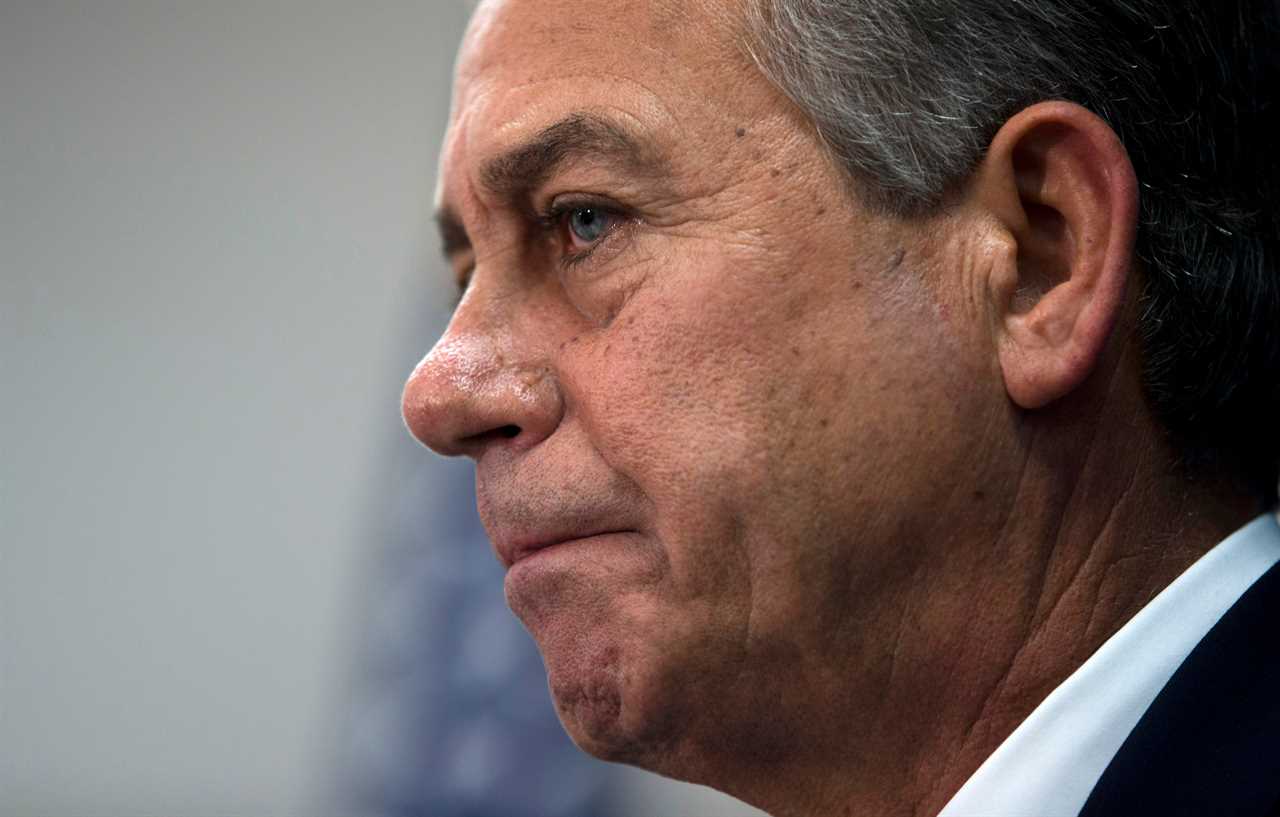
AP Photo/ Evan Vucci
But the Tea Party wave of 2010 allowed the party's conservative bloc to flex its muscle, more so than even during the 1990s. Firebrand Republicans defeated a slew of moderate-to-conservative Blue Dog Democrats, with those individuals eager to battle against an entrenched political system in Washington, one which included members of their own party.
GOP Rep. John Boehner became speaker in 2011, but his tenure saw him battle with far-right conservatives on everything from spending negotiations with then-President Barack Obama to the Ohioan's efforts to end the government shutdown in October 2013.
By October 2015, Boehner was out the door. Rep. Paul Ryan of Wisconsin, who was the most unifying figure within the GOP conference at the time, soon took over, but even he was not immune from conservative sniping about whether he was sufficiently supportive of Donald Trump — before and after the businessman was elected to office.
Despite the 2017 passage of the Tax Cuts and Jobs Act, a crowning achievement of Trump and congressional Republicans, Ryan announced in April 2018 that he wouldn't seek reelection that November. Democrats would go on to win back control of the House that fall.
A post-McCarthy House
The 15-ballot floor fight in January that eventually led to McCarthy's election as speaker was a precursor to the issues that he'd have once he had the gavel in his hand.

AP Photo/J. Scott Applewhite
When McCarthy agreed to rules that included a motion to vacate the chair, which permitted any one member to call for a vote to determine his fate as speaker, he boxed himself in as he was forced to please multiple hardliners in a House with a slim 221-212 GOP majority.
But in the end, most of the eight Republicans who helped oust McCarthy were never going to be satisfied by his leadership, troubled that the Californian wasn't pushing harder for an impeachment inquiry into President Joe Biden and frustrated that he wasn't calling for deeper spending cuts.
The GOP infighting in the 1990s was not as publicly dramatic as the current leadership fight afflicting House Republicans, but both scenarios reveal how conservative divides on everything from spending to the basic functioning of government are not going away.
And the next Republican speaker, even a lawmaker as conservative as Jordan, will also have to navigate those choppy waters.
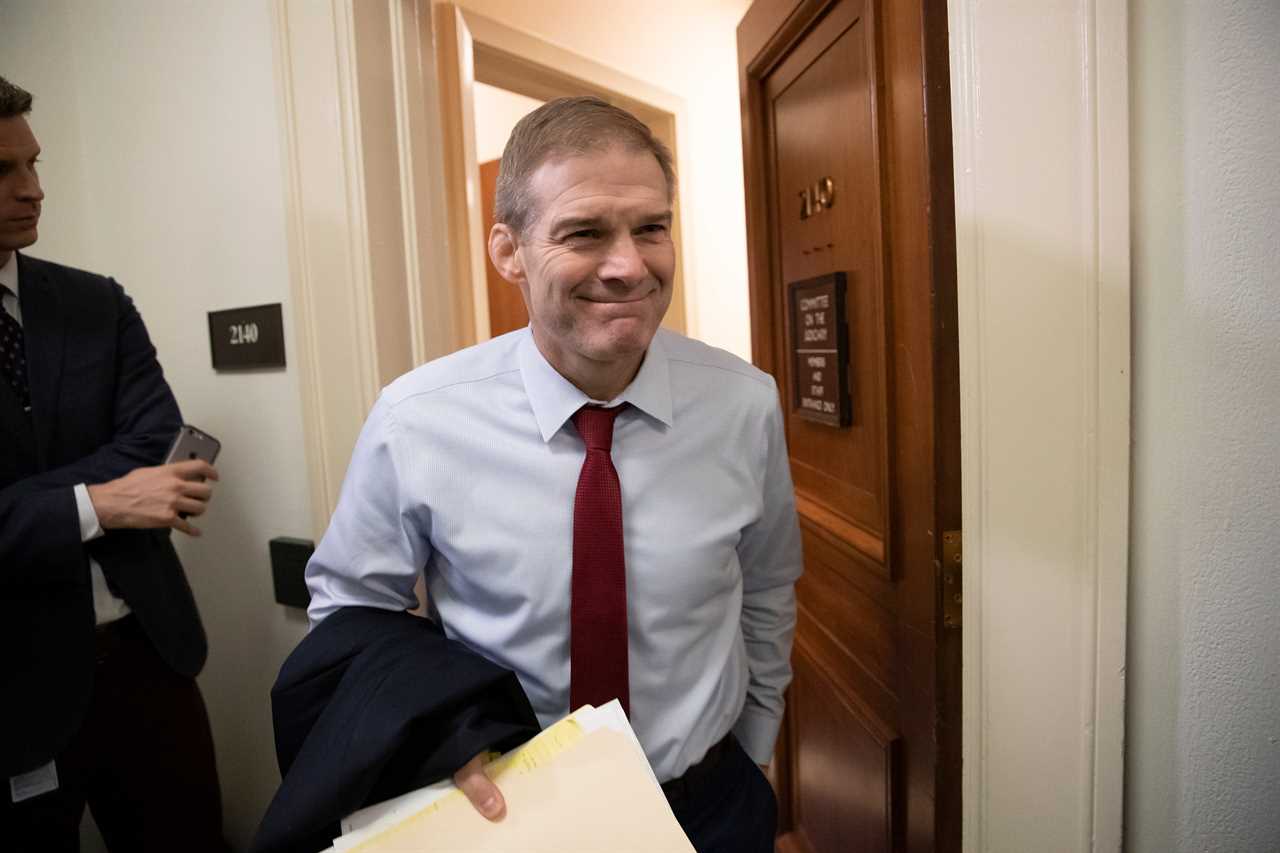
AP Photo/J. Scott Applewhite, File
Since the Republican Revolution of 1994, the party's mainstream conservatives and its most conservative members have been increasingly at odds with one another, which has made it more difficult for the speaker to preside over a cohesive party.
House Republicans over the past 30 years could largely spare a few defections during the times when it held the majority, but with the current majority being so close, it no longer has that luxury.
If the next Republican speaker is to find success, that individual will have to forge relationships unlike any that have existed in the past, as hardline conservatives made it known with McCarthy's ouster that they currently hold the power within the conference.
Read More
By: [email protected] (John L. Dorman)
Title: The House Republican Conference has been built for chaos since the 1990s. It only took one slim majority for that to blow up on them.
Sourced From: www.businessinsider.com/gop-house-chaos-1990s-gingrich-boehner-mccarthy-jordan-conservative-hardliners-2023-10
Published Date: Mon, 16 Oct 2023 21:09:51 +0000
.png)





